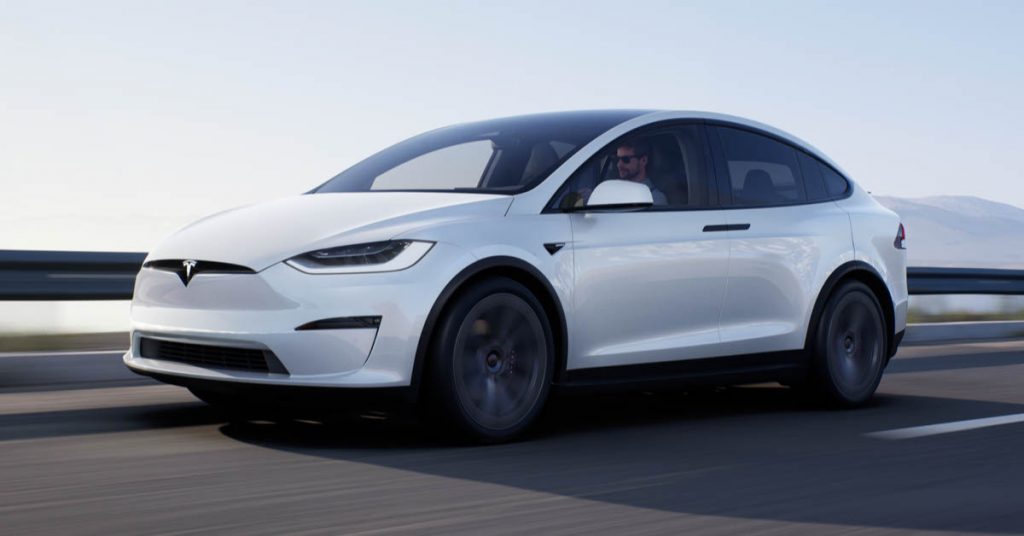
Tesla reported second-quarter earnings after the bell Monday, and it’s a beat on both the top and bottom lines. Shares rose about 2% after-hours. Here are the results.
- Earnings: $1.45 vs 98 cents per share adjusted expected, according to Refinitiv
- Revenue: $11.96 billion vs $11.30 billion expected, according to Refinitiv
The company reported $1.14 billion in (GAAP) net income for the quarter, the first time it has surpassed $1 billion. In the year-ago quarter, net income amounted to $104 million.
Overall automotive revenue came in at $10.21 billion, of which only $354 million, about 3.5%, came from sales of regulatory credits. That’s a lower number for credits than in any of the previous four quarters. Automotive gross margins were 28.4%, higher than in any of the last four quarters.
Tesla had already reported deliveries (its closest approximation to sales) of 201,250 electric vehicles, and production of 206,421 total vehicles, during the quarter ended June 30, 2021.
The company also reported $801 million in revenue from its energy business, including solar photovoltaics and energy storage systems for homes, businesses and utilities, an increase of more than 60% from last quarter.
While Tesla does not disclose how many energy storage units it sells each quarter, in recent weeks CEO Elon Musk said, in court, that the company would only be able to produce 30,000 to 35,000 at best during the current quarter, blaming the lag on chip shortages.
Tesla also reported $951 million in services and other revenues. The company now operates 598 stores and service centers, and a mobile service fleet including 1,091 vehicles, an increase of just 34% versus a year ago. That compares with an increase of 121% in vehicle deliveries year over year.
A $23 million impairment related to the value of its bitcoin holdings was reported as an operating expense under “Restructuring and other.”
The company’s cash position decreased about 5% from last quarter, to $16.23 billion. The decline was “driven mainly by net debt and finance lease repayments of $1.6B, partially offset by free cash flow of $619M,” the company said in its earnings statement.
Accounts payable — the amount of money Tesla owes suppliers and other service providers — rose by 13.7% from the previous quarter to $7.56 billion.
During the quarter, among other challenges, Tesla faced a backlash from consumers in China, recalls in China and the U.S., and delayed deliveries of the high-performance version of its flagship sedan, the Model S Plaid.
Institutional and retail investors asked for updates on when the company plans to start commercial production of its Cybertruck and custom battery cells, and how Tesla will weather ongoing parts shortages and the rising cost of raw materials that Musk previously complained about.
Parts shortages have been stubbornly persistent for Tesla and other automakers. In its shareholder deck, Tesla said that it had delayed the launch of the Semi truck program until 2022.
On the shareholder call Monday, Musk said a “big struggle this quarter” was to procure enough modules that control the airbags and seatbelts in Tesla vehicles. The lack of supply limited the company’s production both in Fremont, California, and Shanghai.
Musk also said that many fans ask why Tesla doesn’t just make its own chips to avoid shortages. He said that supply chain issues are something Tesla will solve with suppliers, laughing that “It’s not like you can just whip up a chip fab.”
Because Tesla uses a lot of the same semiconductors and battery cells in cars as it does in energy storage products, Musk said, the company has reduced its production of Powerwalls, and its Megapack battery systems for use at power stations are sold out until the end of next year.
Musk said he believes there is probably demand for “in excess of a million Powerwalls per year,” and an unspecified but vast amount of Megapacks for utilities given the push to transition to renewable energy. “Solar and wind are intermittent and by their nature really need battery packs in order to provide a steady flow of electricity,” he explained.
As a strategy to manage its supply chain issues for both cars and energy storage products, Musk said Tesla would “overshoot” on cell supply for vehicles and whenever there is excess, it could route that supply over to making Powerwalls and Megapacks.
Tesla Vice President of Vehicle Engineering Lars Moravy said Cybertruck production should begin at Tesla’s new plant in Texas at the end of 2021. Musk emphasized this would be limited production at first, and he anticipates ramping up production to a high volume will prove challenging due to the unique design of the vehicle. Tesla said in its shareholder deck that Cybertruck production will follow production of Model Y in Texas.
Asked when Tesla will open its Supercharger DC fast-charging stations to drivers of other non-Tesla electric vehicles, Musk and Drew Baglino, senior vice president of powertrain and energy engineering, said the company’s goal will be to expand its charging network enough that doing so will not result in longer waits for drivers to charge their vehicles on the road.
Musk also took a moment to brace shareholders that he will “no longer default” to speaking on, let alone leading, Tesla earnings calls after this quarter. He did say he would speak at annual shareholder meetings.





























